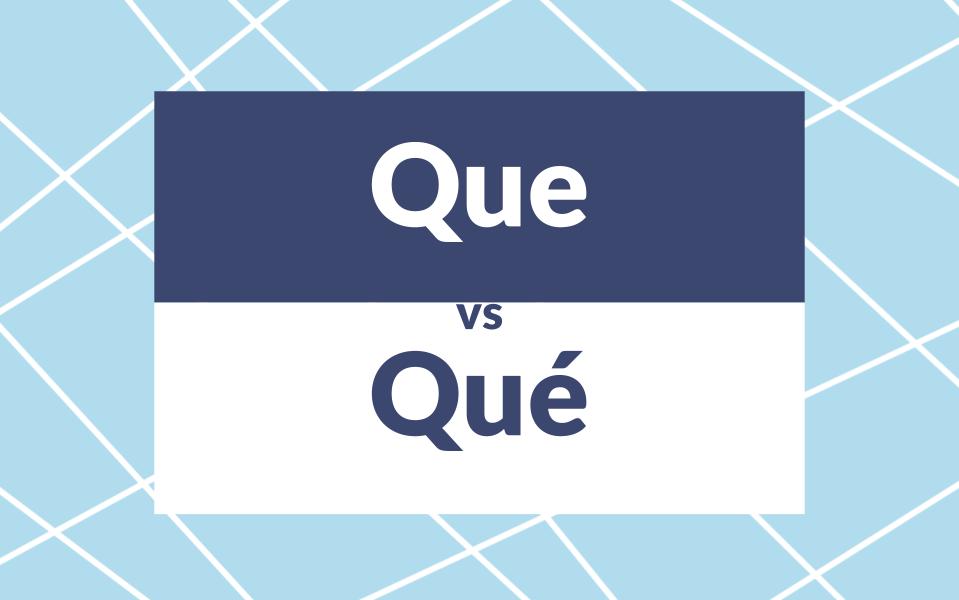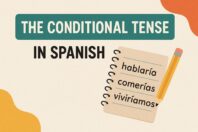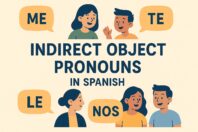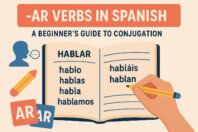Que vs Qué in Spanish: Every use of these two fundamental words

Get our free email course, Shortcut to Conversational.
Have conversations faster, understand people when they speak fast, and other tested tips to learn faster.
More infoThe Spanish word que may appear small and insignificant, but don’t be fooled by appearances! If you read or listen to anything in Spanish, we assure you that you will find que or qué everywhere. These two words are among the fundamental Spanish terms that every speaker needs to understand clearly!
Qué and que are homonyms, meaning that they’re pronounced exactly the same way. It’s vital to recognize the difference between que v qué, however, depending on whether the final -e takes an accent mark called a tilde.
In past posts, we’ve explored other Spanish homonyms whose main difference comes down to an accent, including por que vs porqué, cuanto vs cuánto, donde vs dónde and como vs cómo. Today’s post will be devoted to seeing in detail how que and qué work, and in which situations we should use each one.
Que and Qué: Meanings
The Spanish que without an accent mark may be translated as that, what, which, or who. It can act as a relative pronoun, a subordinating conjunction, and in comparisons. We will look at each of these uses in the following sections.
The other word we’re looking at is qué in Spanish, with the tilde. Qué mainly functions as an interrogative pronoun, and can be translated as what or how. We’ll get into these uses further down in this post once we’ve finished with que.
Que in Spanish
Let’s first go through the various uses of the unaccented word que in Spanish.
Que as a relative pronoun
Relative pronouns are used to link two or more ideas that could otherwise be expressed in two different sentences. We explain these in detail in our post on Spanish relative pronouns.
As a relative pronoun, que in Spanish may be translated as that, who, whom, or which. It’s invariable, so there’s no need to match the gender or number of the noun it refers to.
- My teacher asked me about the book that I read – Mi profesora me pregunto sobre el libro que leí.
- Did you see the flowers that were falling from the trees. – Has visto las flores que caían de los árboles.
- I like the table [that] we bought yesterday. – Me gusta la mesa que compramos ayer.
- They are the firemen [who] they hired last year. – Ellos son los bomberos que contrataron el año pasado.
- I forget the restaurant in which we had dinner. – Yo olvido el restaurante en el que cenamos.
Note that in English the relative pronouns can often be omitted, whereas in Spanish the que is obligatory.
Que as a subordinating conjunction
Que is used to introduce subordinate clauses in a similar way to the English conjunction that in sentences like “He said that it’s true.”
Unlike is often the case with that in English, however, que cannot be omitted, just like we saw with que as a relative pronoun.
- My sister says [that] she’s not coming today. – Mi hermana dice que no va a venir hoy.
- The kids know [that] their dad is happy. – Los niños saben que su papá está feliz.
- It was so much fun that I couldn’t stop laughing. – Fue tan divertido que no pude dejar de reír.
- It seems like it’s going to snow. – Parece que va a nevar.
Que in comparisons
Que is an essential component in phrases where we make comparisons. This use of que in English is translated as than. When we compare things, animals, or people in this way, we normally use the following structures:
- más / menos + adjective + que
- más / menos + noun + que
- más / menos + adverb + que
Sometimes you use direct translations of más and menos in English, as more and less, though in most instances you use superlatives. For more detail, check out our full post on comparisons in Spanish.
- My brother is taller than me. – Mi hermano es más alto que yo.
- My mom says that boys are less intelligent than girls. – Mi madre dice que los niños son menos inteligentes que las niñas.
- He sold more books in February than in March. – Vendió más libros en febrero que en marzo.
- The teacher speaks faster than the student. – El profesor habla más rápido que el estudiante.
Now that we’ve covered the different uses of que, let’s move on to the second word in our comparison of que v qué in Spanish.
Qué in Spanish
Qué in Spanish, with a tilde, means what? or what sort of?. We can use it in both direct questions and indirect interrogative statements.
In addition, qué in Spanish can also be used as an interjection in exclamative sentences.
Let’s now look at each qué meaning in turn.
Qué in questions meaning What
Whenever we need to ask about something where we’re looking for a definition, a description, or to find out some information, we use qué in Spanish just like you use what in English.
- What is love? – ¿Qué es el amor?
- What will happen tomorrow? – ¿Qué sucederá mañana?
- What do you mean by that? – ¿Qué quieres decir con eso?
- What time is it? – ¿Qué hora es?
Qué is just one of the Spanish question words. For the rest of them, along with a deeper exploration of how to pose questions in Spanish, check out our dedicated post on the Spanish interrogatives.
Qué in indirect interrogative statements
Interrogative statements are affirmative statements that express interrogation or ignorance. We use qué in these indirect questions, which usually also translates into English as what.
- He didn’t know what to ask you. – No supo qué preguntarte.
- I asked him what movie he watched. – Le pregunté qué película vio.
- I don’t know what you want for dinner. – No sé qué quieres de cenar.
- We never knew what they really needed. – Nunca supimos qué necesitaban de verdad.
Qué in exclamative sentences
Exclamative sentences in Spanish are used to express emotions or feelings. We use qué in such exclamations to emphasize adjectives or adverbs. This use of qué a great option whenever you need to praise someone’s beauty or express amazement. Note that the English translations with this use may vary, as long as they still express the emphasis we intend.
- What a lovely day! – ¡Qué día tan hermoso!
- Gosh, it’s late! – ¡Qué tarde se ha hecho!
- They really dance well! – ¡Qué bien bailan!
- What a beautiful landscape! – ¡Qué belleza de paisaje!
For a deeper look at phrases like these, take a look at our dedicated post on Spanish exclamations and interjections. We can also recommend our post on Spanish compliments, which frequently take advantage of this same construction.
Qué in some idiomatic expressions
Idiomatic expressions are a vital part of any language. Spanish qué appears in many expressions that are used in common situations. In this section we list some of the idiomatic expressions with qué that are used by native speakers.
| English expression | Spanish expression |
| How are you? | ¿Qué tal estás? |
| What’s Juan like as a father? | ¿Qué tal es Juan como padre? |
| What do you think of it? | ¿Qué te parece? |
| What on earth are you doing that for? | ¿A santo de qué haces eso? |
| What do I care?, So what? | ¿A mí qué?, ¿Y qué? |
| Pardon? | ¿Qué? |
| What’s the point of that comment? | ¿A qué viene ese comentario? |
| What’s that all about? | ¿De qué va la cosa? |
| What about the books that I lent you? | ¿Y qué de los libros que te presté? |
Conclusion: Que v qué
¿Qué tal? At this point in our lesson, we’re sure that you’ve come to understand the importance of que and qué in Spanish. What’s more, now you know how to differentiate between que v qué in Spanish, so you’re ready to express yourself like a pro!
In a nutshell, que in Spanish may function as a relative pronoun, as a subordinating conjunction, and as part of a comparative structure in Spanish. On the other hand, qué in Spanish is normally used in questions, interrogative statements, and exclamative sentences, while also appearing in a number of common idiomatic expressions.
To see how well you’ve grasped the differences between qué v que, why not put your knowledge to the test with the following exercises?
Exercises
Based on the context of each sentence, choose que or qué accordingly. Answers and translations are below.
1. No sé que / qué hora es.
2. La película que / qué vimos se llama “La sociedad de la nieve.”
3. ¿Qué / Que significa “ubicuo”?
4. La nieve es más fría que / qué la lluvia.
5. ¿Que / Qué te pareció el libro?
6. Los críticos dicen qué / que este es el mejor libro del año.
7. No sabemos que / qué hay en la caja.
Answers
1. No sé que hora es. – I don’t know what the time is.
2. La película que vimos se llama “La sociedad de la nieve.” – The name of the movie [that] we watched is “The Society of the Snow”.
3. ¿Qué significa “ubicuo”? – What’s the meaning of “ubiquitous”?
4. La nieve es más fría que la lluvia. – The snow is colder than the rain.
5. ¿Qué te pareció el libro? – What do you think of the book?
6. Los críticos dicen que este es el mejor libro del año. – Critics say that this is the best book of the year.
7. No sabemos qué hay en la caja. – We don’t know what is in the box.



